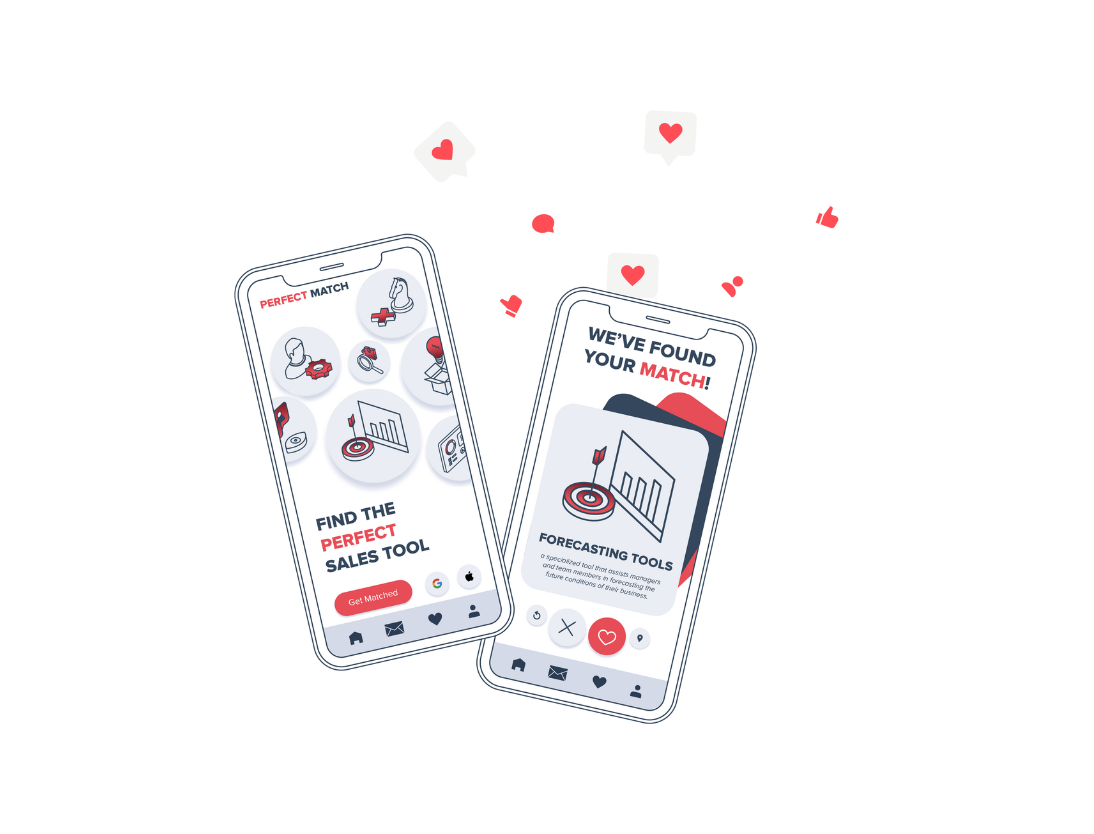Have you ever wondered what the difference between sales enablement vs. sales transformation is? Or are they both the same? In this article, we illustrate how both functions are different but essentially work together within the overall sales process.
What is sales enablement?
Sales enablement is a repeatable series of steps, tweaked and improved upon in each cycle, that provides your sales team with the variety of resources they may need to win more business. These resources can be anything from content to sales enablement tools — all with the view to help your salespeople sell your products or services to customers.
What is sales transformation?
Sales transformation is a process of change in relation to the sales operations of a business. This can be in the form of building upon or updating current foundations, driven by a company-wide desire to achieve sales-impacted objectives (such as hitting revenue targets or increasing profit).
What’s the difference?
The easiest way to see the differences between sales enablement and sales transformation is to see them as potential allies that can both be valuable to a business and exist in harmony, rather than as two separate, unrelated potential options to a problem.
Sales transformation is a fixed piece of the puzzle in as much as it involves identifying processes that need to be changed and then changing them. Sales enablement is more dynamic: it is an iterative process that doesn't really come to an end.
Sales enablement is a continual effort to evaluate, re-evaluate and refine processes, tools and strategies in order to maximise sales performance. Both approaches are necessary if an organisation wants to reach its goals.
Ultimately, the difference between sales enablement and sales transformation comes down to how you view your business strategy: as something that needs periodic attention or something that can be set up.
What about the difference between sales enablement vs. sales operations?
Sales operations is a tactical position that focuses on the day-to-day runnings of the sales organisation. This includes hiring and onboarding new reps and helping manage the sales tech stack in order to track performance, insights, and key business outcomes.
Sales operations roles also work on refining processes such as setting up sales automation, enhancing CRM systems, and tracking customer patterns or behaviours to optimise sales strategies.
As mentioned above, sales enablement focuses more on winning more business and helping create better customer experiences through training and guidance.
How sales operations and sales enablement should collaborate
The success of any organisation's sales efforts depends on the collaboration between its sales operations and sales enablement teams. By leveraging each team's strengths, businesses can create an integrated system that ensures consistency across all accounts and maximises efficiency.
For instance, a well-run sales operations team might identify areas for improvement within an existing process, while the sales enablement team can provide the tools necessary to carry out those changes.
By working together, these teams can eliminate silos and ensure that initiatives are properly implemented throughout the organisation.
Additionally, sales operations and enablement teams should also leverage each other’s data in order to gain more insight into customer behaviour.
For example, sales operations might use data gathered from enablement activities such as content distribution and usage tracking to identify customer preferences and target high-value accounts.
On the other hand, sales enablement teams can use data from operations such as customer segmentation and lead scoring to craft better messaging for their campaigns.
By taking a collaborative approach to gathering insights, both teams can improve the effectiveness of their efforts while simultaneously bolstering organisational performance.
Implementing sales transformation
To lay this out simply let's look at the two as a journey. Imagine you're a sales leader or manager with big targets to hit (a destination) and sales processes (a vehicle) to get you there.
Only, you're looking at your current vehicle, and you sense something is missing — think of it as having only a beat-up ‘86 Corolla to take you all the way from Miami to Las Vegas. You need an upgrade to your vehicle (your sales processes). You need sales transformation.
So to get started, you sell the need for change to your passengers (your co-workers/sales team) and have looked at the data, statistics and past performance of your current vehicle to identify areas for change.
These steps will help you firm up your choice of vehicle: Do you need a pick-up? A sports car? Or maybe it's just a newer Corolla — after all, Sales transformation does not necessarily mean a complete or drastic change to your processes, it might just be modernising a certain section.
Once you've picked your new car and know the changes needed, you should create a series of measurable goals around the proposed upgrade and how that will look for your team. You want to get to Vegas, but a key result would first be a shorter trip to Texas using the new vehicle. These smaller goals make up your OKRs (Objectives and Key Results).
For a true sales transformation process, you need to align with your marketing team, (your mechanics). If you're not on the same page as your mechanics, they could be putting diesel in your petrol engine — or in real terms, marketing a product to your audience using different language or USPs leading to a disjointed lead to client experience.
After this, you're all set to put your sales transformation into action — of course, you'll monitor over time and track progress, asking questions like “Is my MPG keeping to standard?”, “What about the tire depth?” Are you happy with how things are looking when a few miles are on the clock?
Whatever the metrics, it's important to track, check and access them over time.
Implementing sales enablement
Okay, so negotiations are finished and you've got your new car (your sales transformation is complete), and you're now in a position to set off for Vegas. But could you make the car go faster?
Could you fine-tune it to use less gas? Maybe you could even take an extra member of the team on that roof rack? It sounds like it's time to optimise your vehicle. It sounds like it's time for sales enablement.
Sales enablement, in the simplest sense, arms the sales team with the resources they need to convert leads — but it's very much a collaboration.
Sales (the driver) needs to provide marketing (the mechanics) with information on types of content that is missing or materials that they could utilise to sell more effectively and reach their destination more efficiently.
Much like fine-tuning and optimising a car, there are a few vital areas to focus on when implementing sales enablement, namely: reporting and analysis, sales content optimisation, technology and automation, and sales enablement software.
Reporting is very much about agreeing on standardised reports — are we talking miles per hour or kilometres per hour?
Sales content optimisation looks to streamline the sales process with sufficient case studies, pitch decks and email templates — extra can of NOS strapped below deck?
Technology and automation and sales enablement software focuses on taking the typically manual process of sales and using technology like HubSpot to bring it into the modern day — who doesn't love an automatic?!
How Huble can help optimise your sales processes
Congratulations! You've gone through sales transformation and got yourself a brand-new car that meets all your needs.
You've also driven that car to the sales enablement garage and optimised it to be primed and ready to transport your sales team and equip them with everything they need to sell effectively.
Suddenly that road to Vegas is looking a lot shorter, smoother and more enjoyable. The important takeaway from this is that sales transformation and sales enablement needn't be ideas accessed against each other, or even necessarily at the same time.
They both hold substance and can be of great benefit to a business — ensuring they have a well-oiled, fuel-efficient and high-performing sports car sales team.
Did you find this blog insightful? At Huble, we offer more than just insights. Our sales consultancy can help you implement sales transformation in your organisation.
Ready to transform your sales operations? Speak with our team today and let us guide you on your journey to sales excellence.













